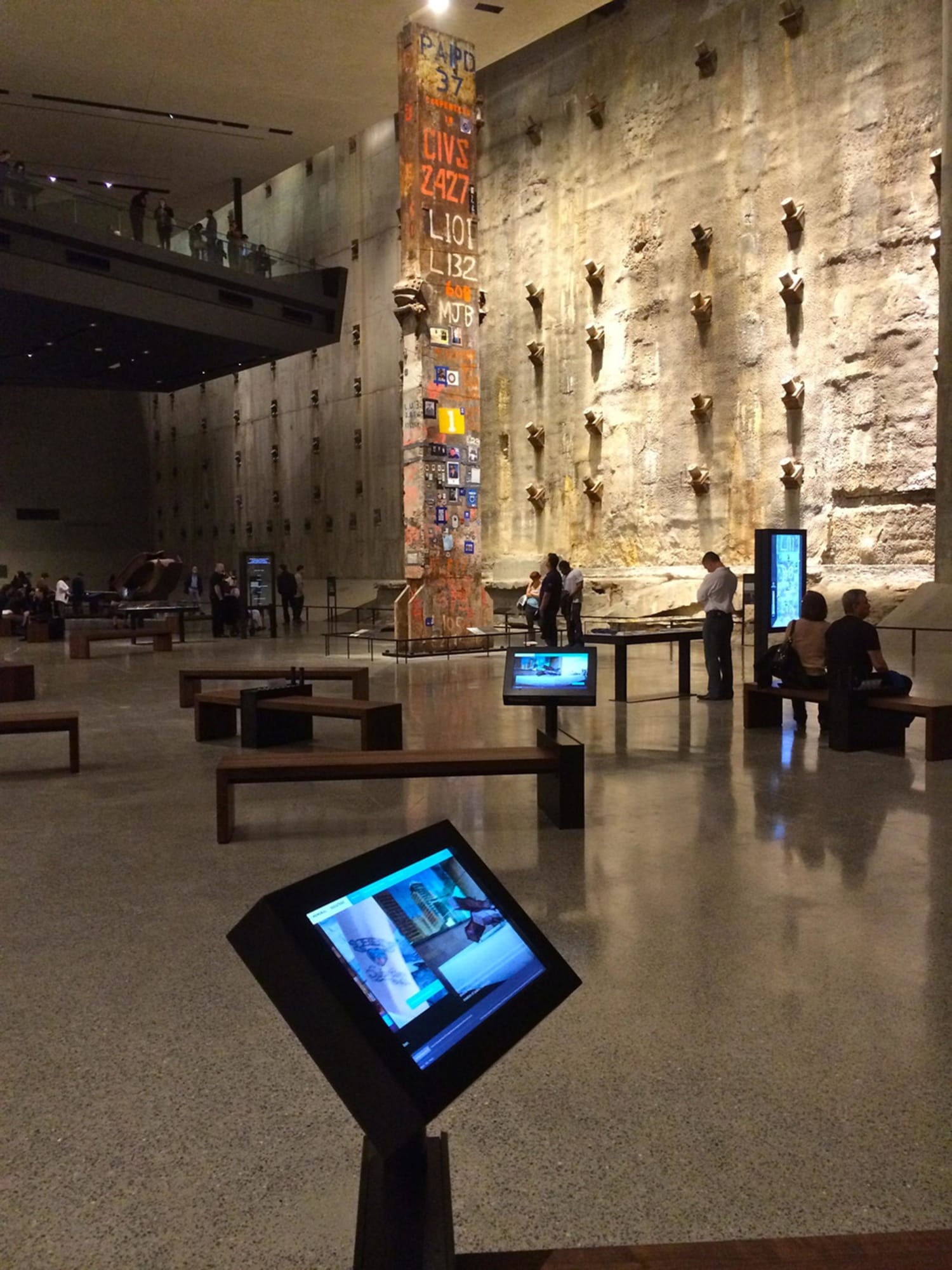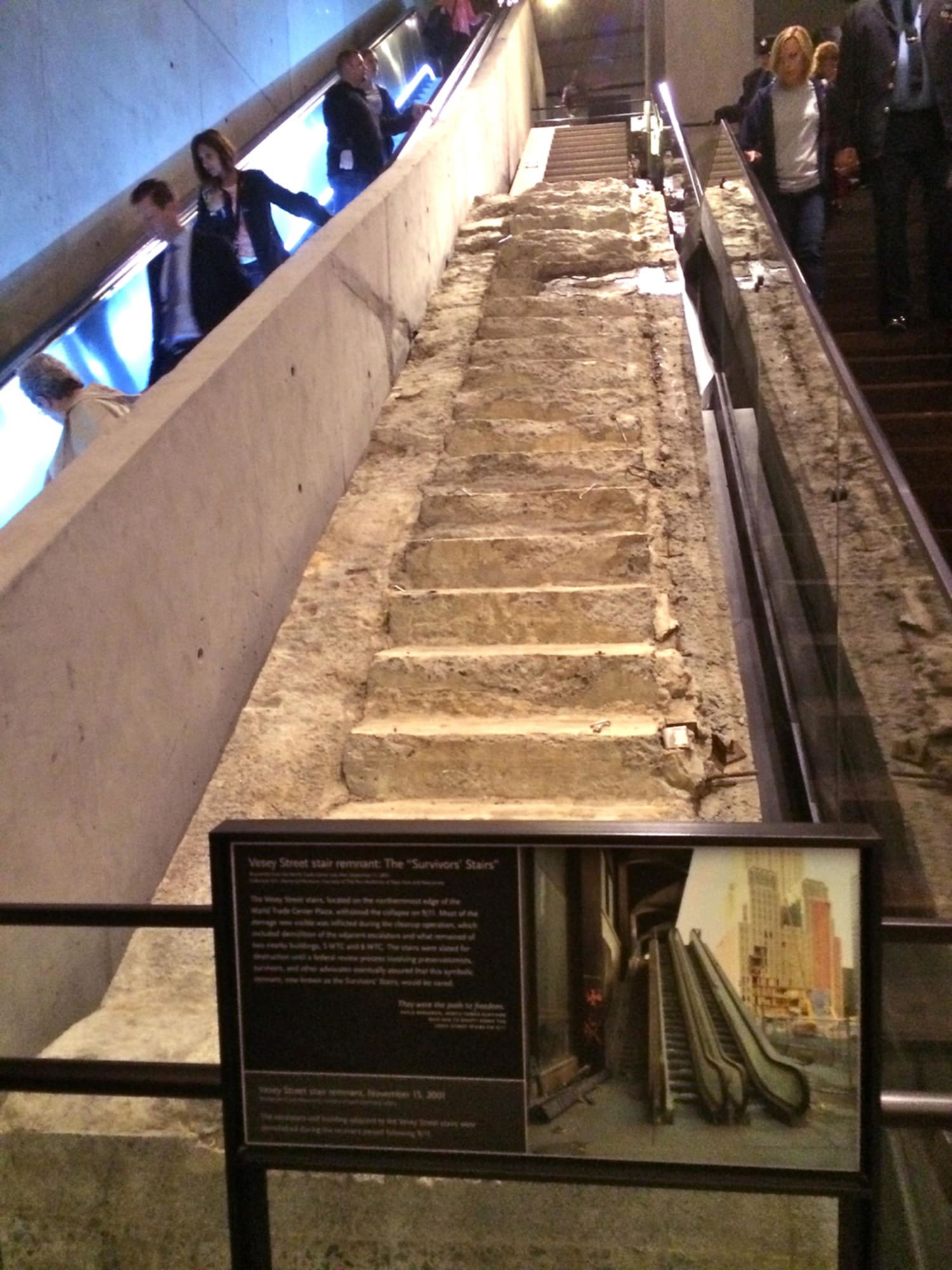NEW YORK, NY -- Like many New Yorkers, Ricardo Mulero has a September 11th story. He was getting off the subway at Greenwich Village in Lower Manhattan on his way to work, when he stopped to see what a crowd of people were looking at. Just seconds before, United Airlines Flight 175 had crashed into the South Tower of the World Trade Center.
Thirteen years later,
Mulero has a different perspective on that tragic day, one that has
earned him a historic- and prestigious role. Mulero led the team that
created the National September 11 Memorial & Museum exhibition, which opened last May. In this capacity, Mulero and his team at Thinc Design
worked with the museum team, architects and engineers to help plan the
museum’s structure as well as the presentation of the many artifacts
remaining from that tragic day.
 Courtesy of Ricardo Mulero
Courtesy of Ricardo Mulero
“Unlike any other history
project that I have worked on, it was something that I had been part
of,” Mulero told NBC News. “That became kind of interesting.”
Having previously worked
on exhibitions at the U.S. Holocaust Memorial Museum and the Freedom
Park in Pretoria, South Africa, Mulero was in a prime position to take
charge of this monumental project. Still, the Puerto Rican designer, who
also studied architecture and preservation, faced major challenges, not
the least of which was the fact that the museum itself is quite
massive, at around 125,000 square feet.
“We analyzed the space
and instead of looking at the obstacles, we tried to look at what were
the opportunities here,” Mulero said.
Many of the artifacts
included in the exhibition are quite large, such as the remains of the
World Trade Center’s large steel frames and a damaged fire truck
recovered from the site. Displaying these was not only a feat of design
but of engineering as well.
Like in all museums, the
artifacts had to be mounted, but mounting large metal structures isn’t
so easy. Mulero’s team had to figure out ways to preserve the visual
integrity of the artifacts, so that they were differentiated from the
engineered mounts. To do this, they painted the mounts gray so that they
were less noticeable.
 Courtesy of Ricardo Mulero
Courtesy of Ricardo Mulero
The site of the museum
itself was also on display, Mulero explained, providing the design team
with the chance to contain the exhibits within the archaeology of the
former WTC site. Mulero said the design team' ultimately favored an
"austere approach" to the exhibition, making the site an artifact
itself.
“We maintained that
because we felt it evoked the absence of something monumental that was
no longer there,” Mulero said. “It was almost like designing an
exhibition that was invisible in a way, because the objects are so
powerful in themselves that they evoke devastation and monumentality."
Beyond the technical
hurdles of designing this museum, there was the emotional element.
People around the world had seen the devastating events unfold, either
in person or on television.
Added to that, Mulero
had to determine ways to reconcile the tragedy in New York with the 9/11
events at the Pentagon in Washington, D.C. and Shanksville,
Pennsylvania. Given the museum’s national scope, Mulero said that no
choice in the museum could be made arbitrarily.“Everything has a
powerful message or significant story. Everything has a purpose in this
museum,” said the Latino designer.
 Luis Carle
Luis Carle
While his own memories of
that day remain etched in his mind, designing the museum’s exhibition
has given him new perspective on what the moment in history symbolizes.
Having spent over four years working with materials from that day,
Mulero said he can now begin to see why many victims’ families wanted so
badly for the museum to be built.
He hopes his imprint at the museum can inspire others to prevent similar atrocities from happening again.
“For future generations,
I hope that they can use such an event as a positive message to better
the world and use [the museum] as a resource,” Mulero said.


No comments:
Post a Comment